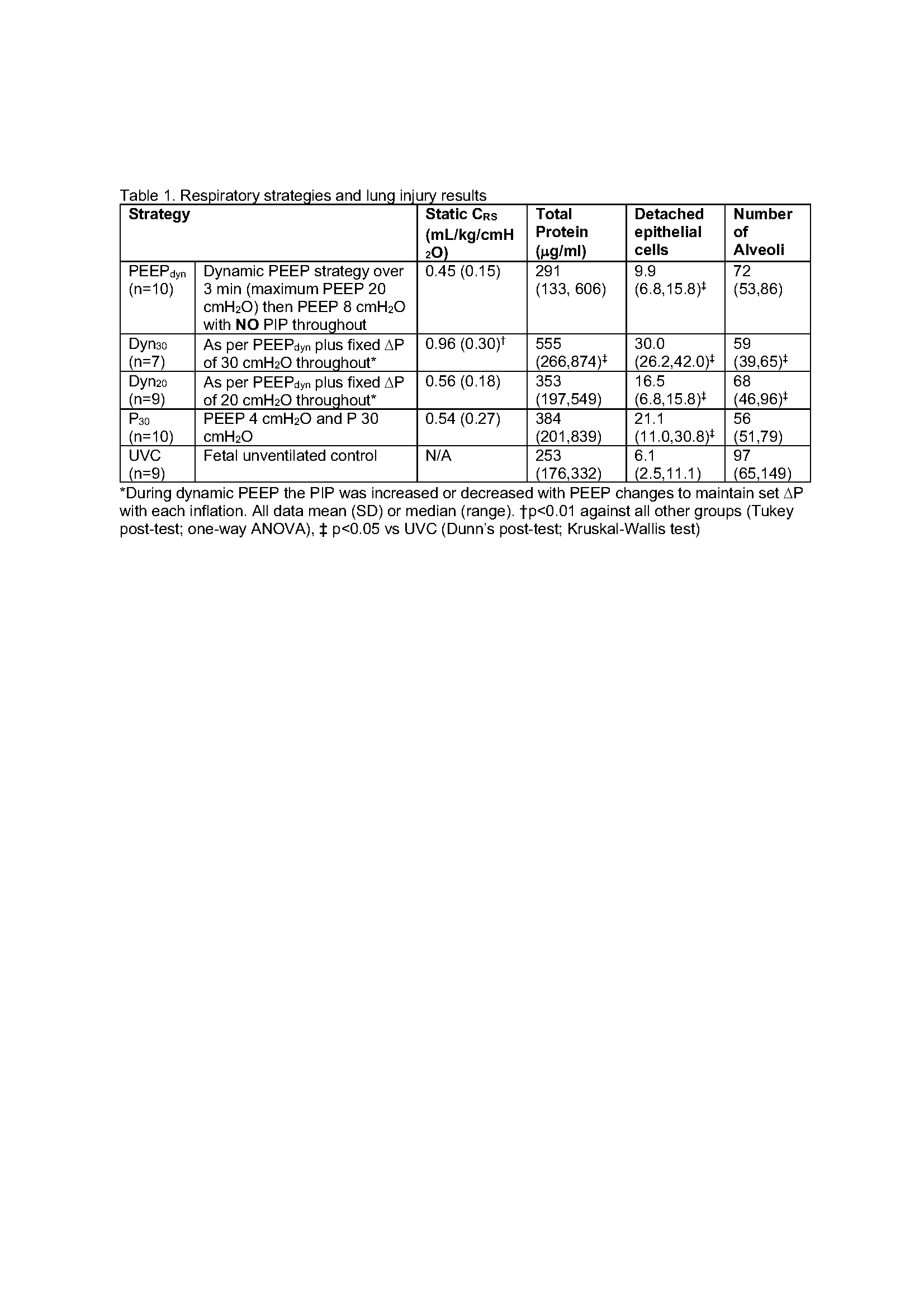Neonatal/Infant Resuscitation
Neonatal/Infant Resuscitation 2
316 - Does PIP Matter At Birth? The Role Of Inflating Pressure On Preterm Lung Injury
Sunday, April 30, 2023
3:30 PM - 6:00 PM ET
Poster Number: 316
Publication Number: 316.348
Publication Number: 316.348
David Tingay, Murdoch Children's Research Institute, Parkville, Victoria, Australia; Monique E. Fatmous, The Royal Children's Hospital, Melbourne, Victoria, Australia; Kelly Kenna, Murdoch Children's Research Institute, Melbourne, Victoria, Australia; Ellen Douglas, Murdoch Children's Research Institute, Parkville, Victoria, Australia; Arun Sett, Western Health, Melbourne, Victoria, Australia; Prue Pereira-Fantini, Murdoch Children's Research Institute, Parkville, Victoria, Australia

David Tingay, MBBS DCH FRACP PhD
Group Leader
Murdoch Children's Research Institute
Parkville, Victoria, Australia
Presenting Author(s)
Background:
Inflation is essential for aeration at birth, but clinicians give inflating pressures (PIP) in the Delivery Room without any evidence to support practice.
Objective: We aimed to determine 1) the role of driving (inflating) pressure (DP=PIP-PEEP) on initiating lung injury in preterm lambs and 2) the independent injury potential role of DP and PEEP.
Design/Methods: 124-127d steroid exposed preterm lambs (8-10/gp) were randomly allocated to 15-min of four different respiratory support strategies (Table 1), followed by 30-min of apnoea (to allow injury marker expression) whilst on placental support. Lung mechanics, regional aeration and ventilation and aeration and tidal power were measured throughout. Lung tissue and bronchoalveolar fluid were analysed for regional lung injury, including histology, immunohistochemistry and proteomics.
Results: Use of ΔP 30 cmH2O with dynamic PEEP (Dyn30) resulted in more rapid aeration, and significantly higher tidal volume (VT; often >10 ml/kg), and dynamic compliance than Dyn20 and P<sub>30 (p< 0.0001; mixed effects). Dyn20 and P<sub>30 lung mechanics were the same, but P<sub>30 exposed the lung to higher energy loads and greater tidal mechanical power (both p< 0.05). Interestingly, aeration was the same in all groups at 15 min, even PEEPdyn (no PIP or tidal inflations). PEEPdyn resulted in the least lung injury, with injury markers increased with higher ΔP, especially in the gravity non-dependent lung. Despite similar VT between P<sub>30 and Dyn20 there was less lung injury with Dyn20 suggesting injury mechanisms in addition to volutrauma are present at birth. PIP increased protein pathways associated with metabolism, coagulation and complement cascade in the lung
Conclusion(s):
Driving pressure is essential for lung aeration at birth but comes with a risk of volutrauma and direct pressure injury (ergotrauma and barotrauma). Dynamic PEEP does not initiate lung injury alone and may reduce this risk by allowing lower ΔP. There is an urgent need to understand the clinical impact of different PIP levels at birth.

